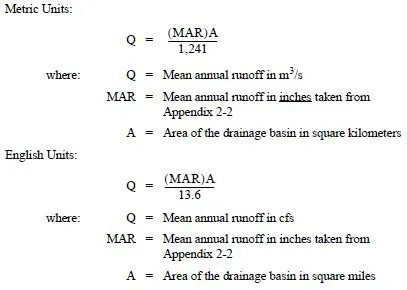2-6 Rational Method
This section presents a description of the Rational Method.
2-6.1 General
The Rational Method is used to predict peak flows for small drainage areas, which can be either natural or developed. The Rational Method can be used for culvert design, pavement drainage design, storm sewer design, and some eastern Washington stormwater facility design. The greatest accuracy is obtained for areas smaller than 100 acres and for developed conditions with large portions of impervious surface (pavement, roof tops, etc.).
Basins up to 200 acres may be evaluated using the rational formula (Equations 2-3 and 2-4); however, results for large basins often do not properly account for effects of infiltration and thus are less accurate. PEOs should never perform a Rational Method analysis on a mostly undeveloped basin that is larger than the lower limit specified for the USGS regression equations, because the USGS regression equations will yield a more accurate flow prediction for that size of basin. The formula for the Rational Method is as follows:

When several subareas within a drainage basin have different runoff coefficients, the rational formula can be modified as follows:

Hydrologic information calculated by the Rational Method shall be submitted as a calculation package within the hydraulic report using the spreadsheet found on WSDOT’s hydraulics and hydrology webpage under tools, templates, and links or other similar forms approved by the State Hydraulics Office that best describe the project’s hydraulic information.
This spreadsheet contains all the required input information and the resulting discharge.
The description of each area should be identified by name or station so the area may be easily located. A plan sheet or map showing the delineation of these areas shall be included with the hydraulic report along with the appropriate calculations.
